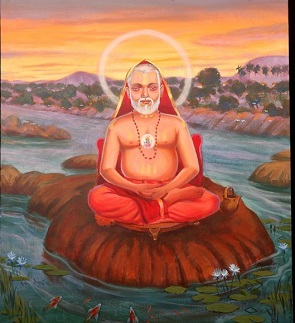The Tungabhadra river is formed from the confluence of the Tunga river and the Bhadra river, which flow down the Western Ghats in Karnataka. One of its primary tributaries connects it with the holy shrine of Mantralayam, along the Kurnool district in Andhra Pradesh.
Over generations and decades, the pristine river Tungabhadra is synonymously associated with Guru Raghavendra Swamy for its connection with the holy pilgrim destination, Mantralaya. The river forms the holy abode of the Swamy and is said to hold a special place in his heart.
In August 1671, it was on the banks of this holy river that Guru Raghavendra Swamy chose to enter the Vrindavana. The holy river is believed to wash away sins for its devotees who take a holy dip, in all faith and belief. While the river has its origins in Karnataka, it flows through several holy places and enters Andhra Pradesh, through the east.
The river is famous for its previous connections with Rayaru. Legends and tales go that in all the previous births and forms, the Tungabhadra was eternally present along with the Guru. As Shankukarna, it was at Nava-Vrindavana on the banks of Tungabhadra that Guru Raghavendra Swamy heard the melodious veena music played by Goddess Saraswathi. It was here, that engrossed in music, he was cursed by Brahma to be born as human.
During the Ramayana and Mahabharatha periods, Tungabhadra was also known as Pampa. As it is a river of confluence, it is also considered to be a confluence, an amalgamation and integration of two powerful belief systems – Dvaita and Advaita. It flows by the holy town of Srinegri, the seat of Shankara who propounded the Advaita system before reaching Manchale or Mantralaya and Bichale, the place where the Dvaita system flourished.
Beyond the facts, however, lies a deep system of faith and belief. The knowledge and experience that you have dipped in the rivers which carries the eternal fragrance and essence of the great saint-God, Guru Raghavendra Swamy.

